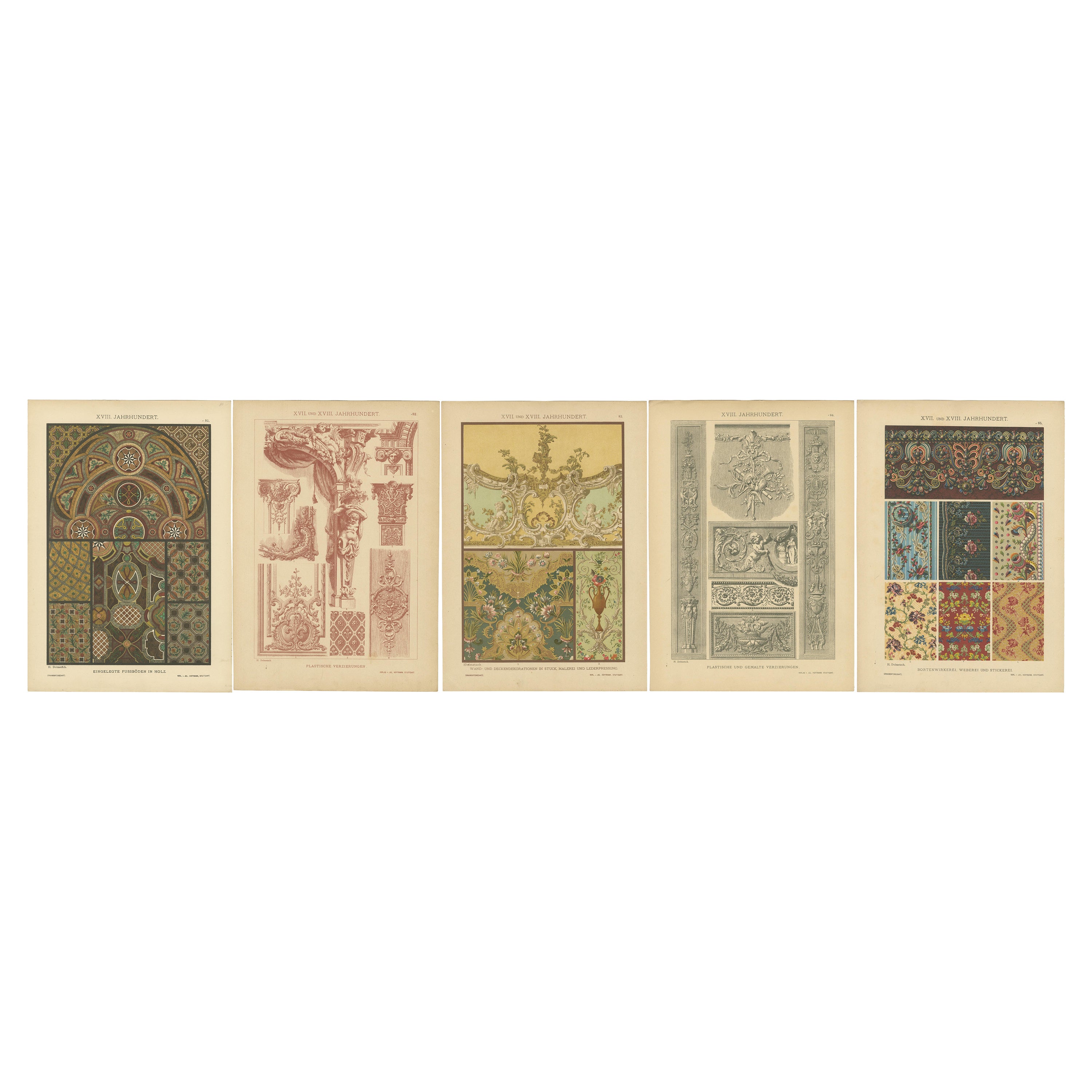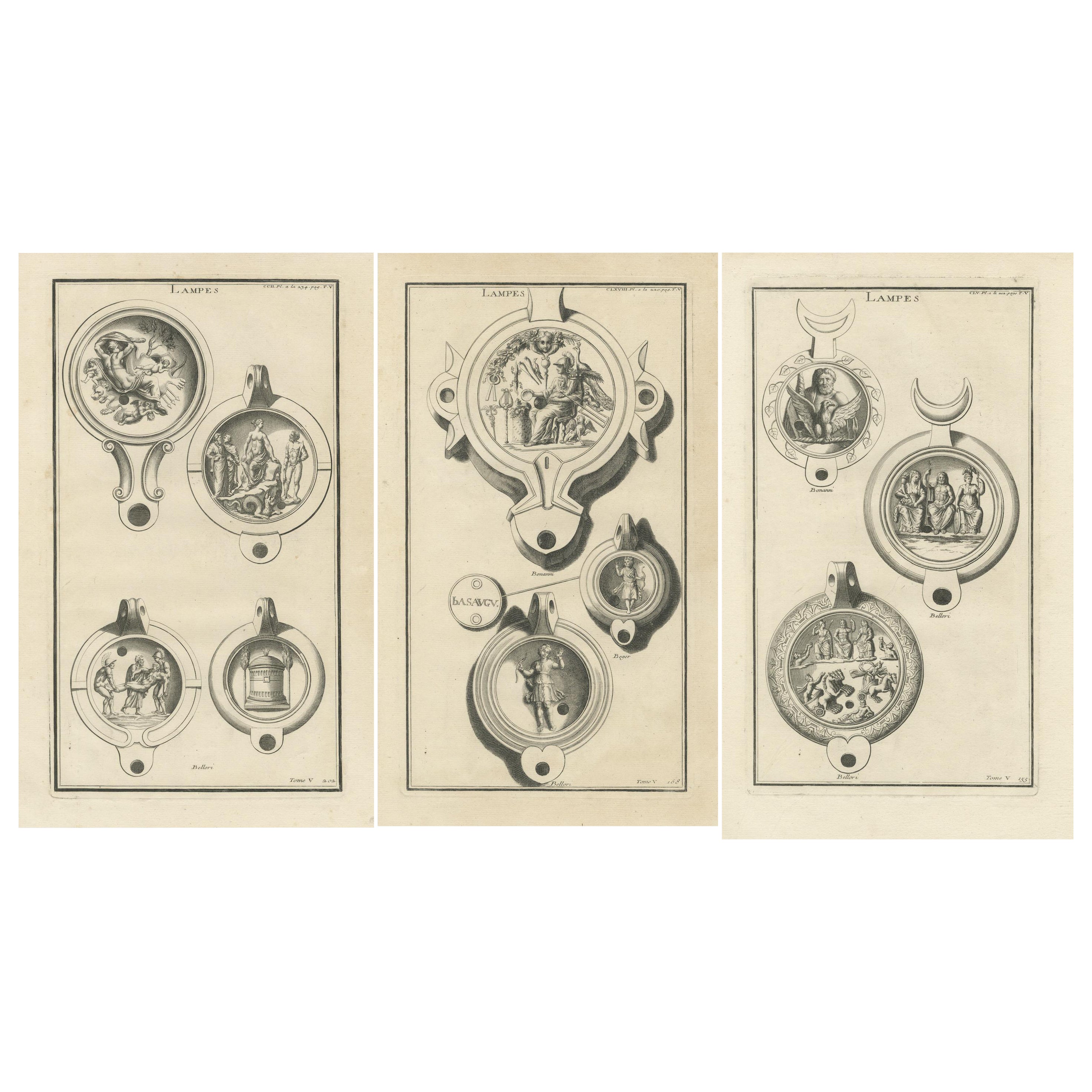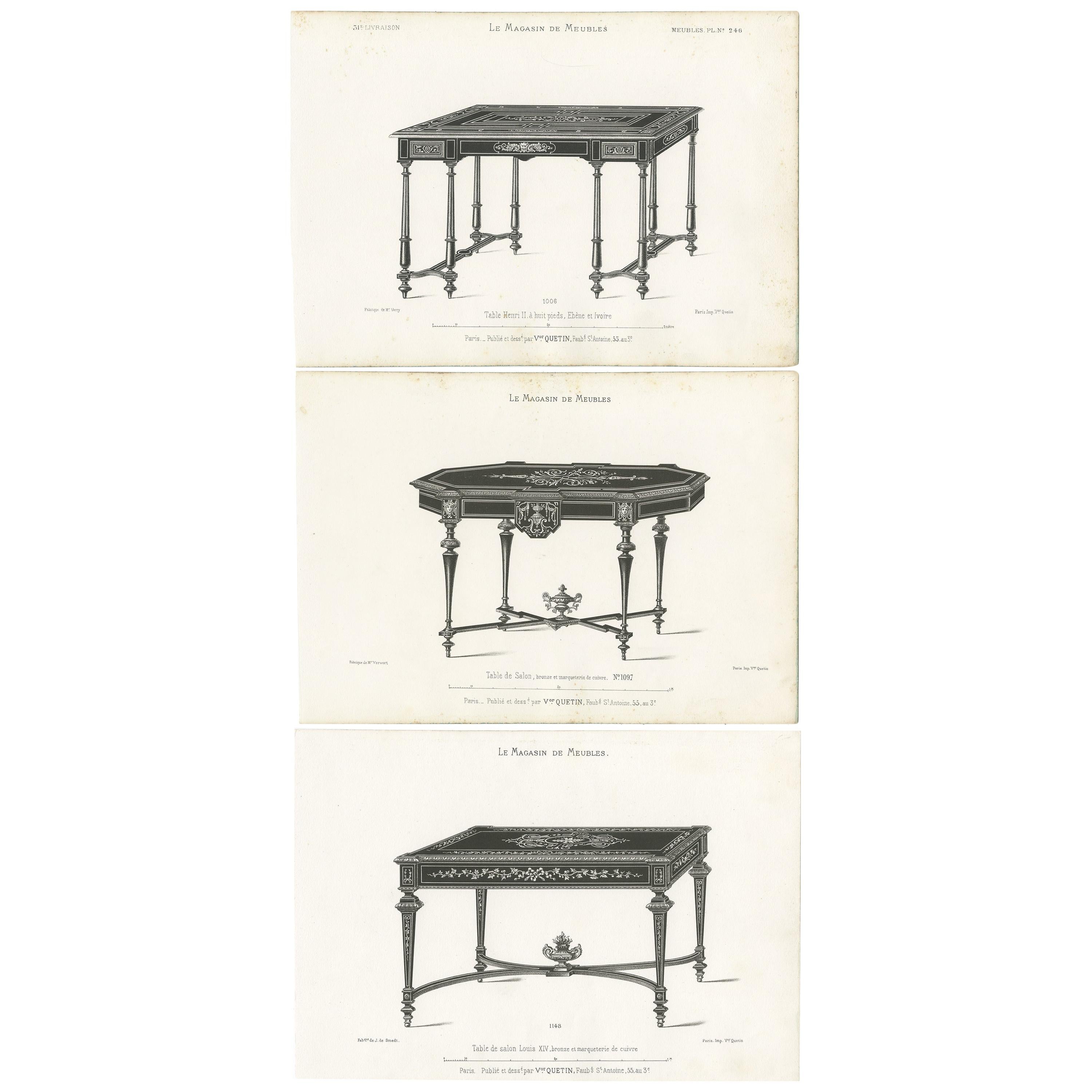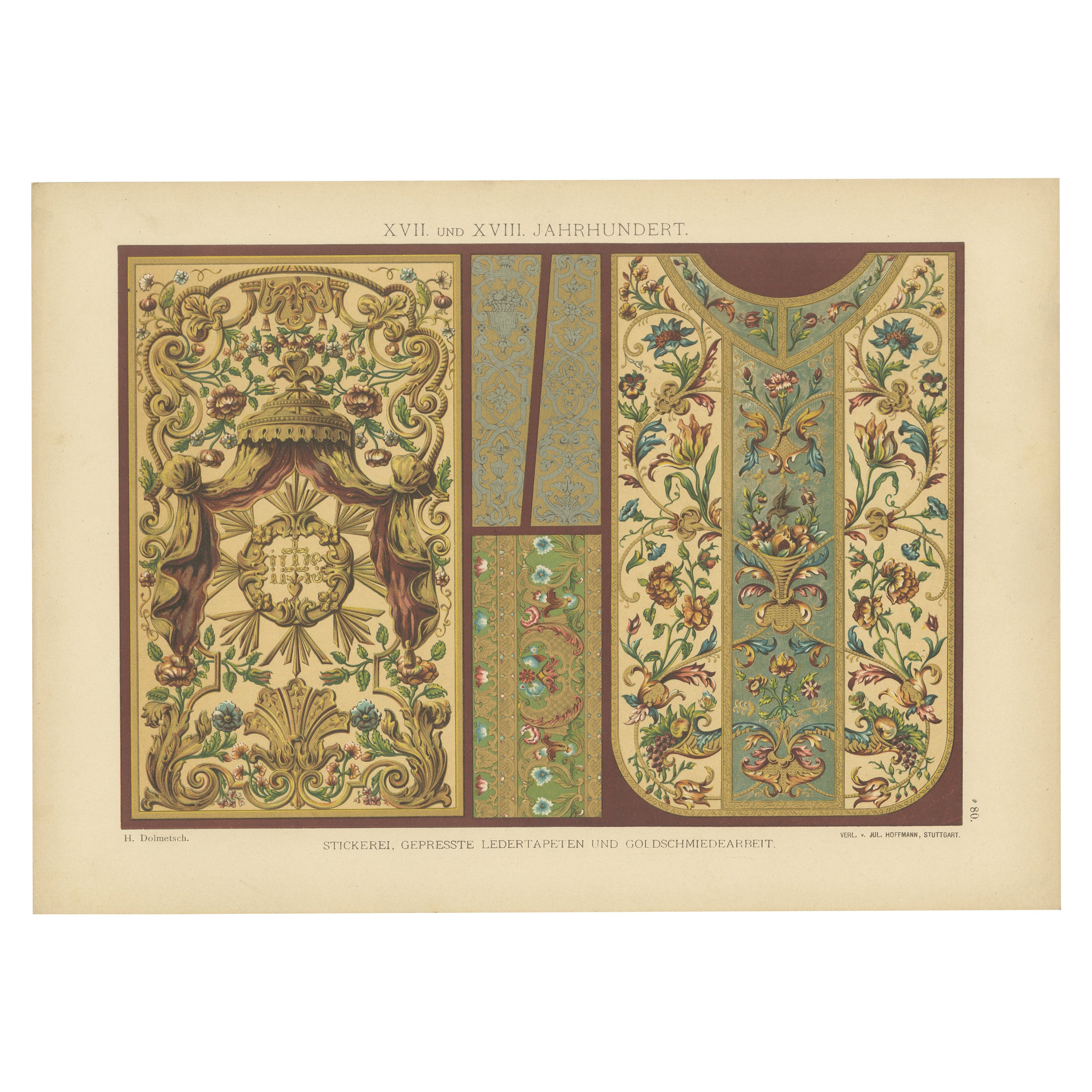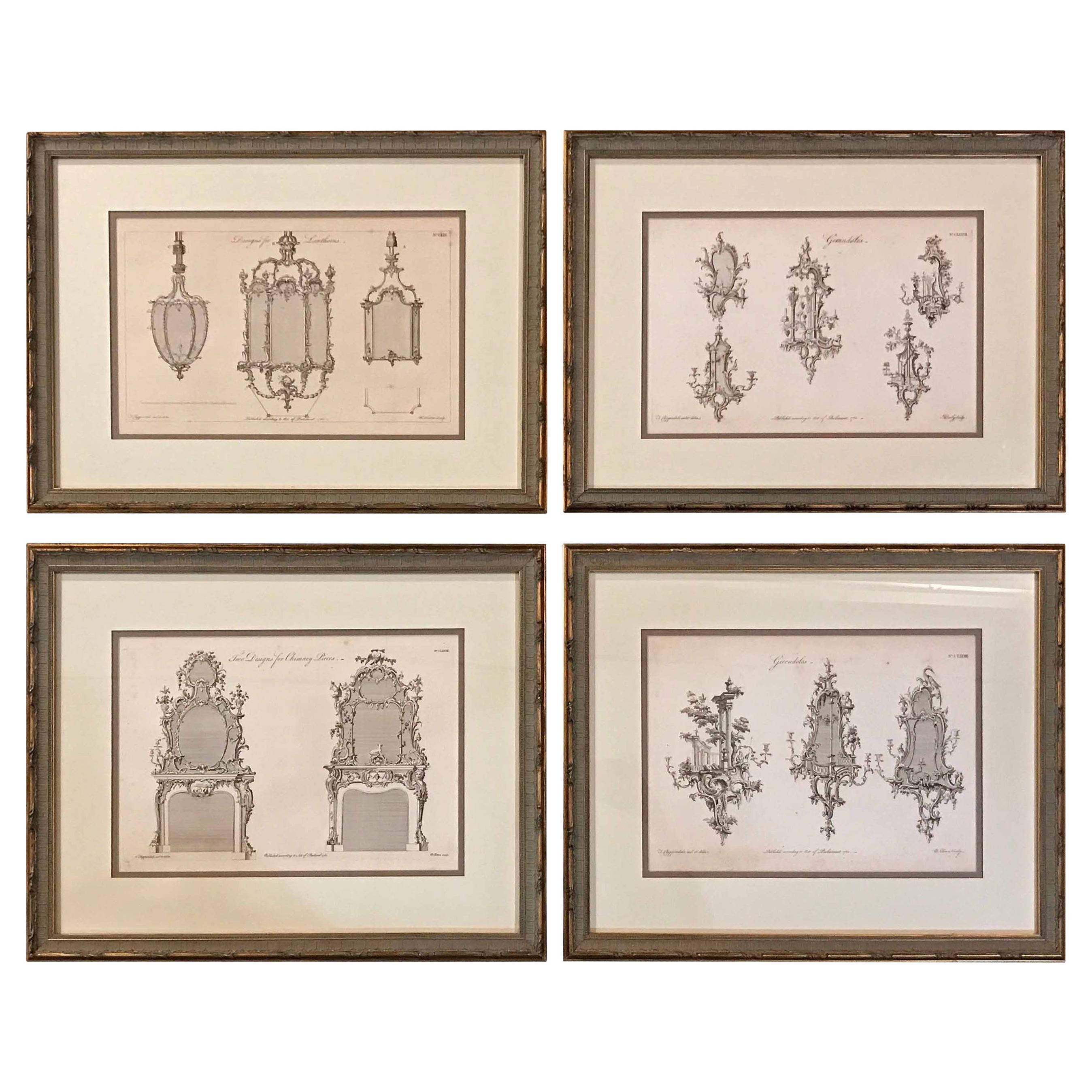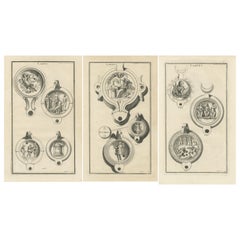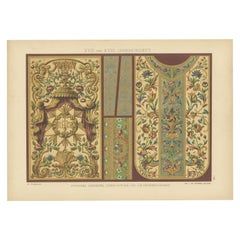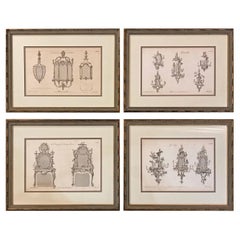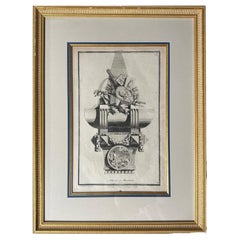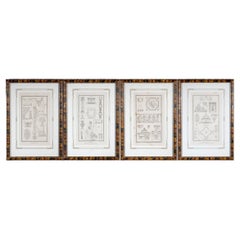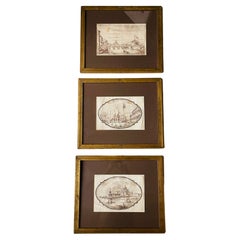Items Similar to Baroque Ironwork Designs: Tables and Candelabras Engraved, 1767
Want more images or videos?
Request additional images or videos from the seller
1 of 6
Baroque Ironwork Designs: Tables and Candelabras Engraved, 1767
$1,236.07per set
$1,545.08per set20% Off
£915.99per set
£1,144.99per set20% Off
€1,032per set
€1,290per set20% Off
CA$1,687.47per set
CA$2,109.33per set20% Off
A$1,877.24per set
A$2,346.55per set20% Off
CHF 984.07per set
CHF 1,230.09per set20% Off
MX$22,939.39per set
MX$28,674.24per set20% Off
NOK 12,530.92per set
NOK 15,663.66per set20% Off
SEK 11,796.13per set
SEK 14,745.16per set20% Off
DKK 7,857.56per set
DKK 9,821.95per set20% Off
Shipping
Retrieving quote...The 1stDibs Promise:
Authenticity Guarantee,
Money-Back Guarantee,
24-Hour Cancellation
About the Item
The engravings are a stunning representation of Baroque ironwork designs, a testament to the intricate artistry of the 18th century. Created in 1767, the works of Charpentier and Huquier, as well as Soubeyaran and Oppenort, are depicted in these images. They showcase an array of ornamental tables and candelabras, each piece rich with the elaborate detail characteristic of the Baroque era.
Tables are adorned with scrollwork, floral and foliage motifs, and classical figures, often with a central crest or medallion. These designs not only reflect the aesthetic of the time but also the technical skill involved in working iron into such delicate patterns.
The candelabras exhibit a similar level of ornamentation, with multiple arms gracefully curving outwards to hold candles, often topped with elaborate finials. These would have served as both functional items and decorative centerpieces, illuminating the lavish interiors of the period.
The fact that these designs have been preserved in such detailed engravings allows us to appreciate the beauty and complexity of Baroque decorative arts, especially in ironwork, which required a high level of craftsmanship and artistry to produce. The engravings serve as a historical record of the decorative trends and techniques of the time, and they continue to inspire admiration for the mastery of Baroque artisans.
More about the artists:
Étienne Charpentier (c. 1707–c. 1792) was a French artist known for his work in the Rococo style, which was prevalent during the 18th century. While specific details about his life may not be widely documented or readily available, we do know that artists of this era, especially those active in the decorative arts, were often involved in producing designs for a variety of luxury items and architectural elements that were in vogue among the European elite.
The Rococo style, where Charpentier's work would be categorized, emerged in France as a decorative evolution of the Baroque era, characterized by lighter themes, more playful and intricate ornamentation, and an emphasis on asymmetry and curved lines. This style was epitomized by elaborate scrollwork, floral patterns, and a general sense of elegance and fluidity.
Given the time frame in which Étienne Charpentier was active, it is likely that he contributed to the design of ornamental engravings, interior decorations, and possibly furniture or architectural detailing. Artists and designers of the Rococo period often created intricate engravings to be used by craftsmen in the manufacture of decorative items. These engravings served as templates for works in various mediums, including ironwork, woodwork, and textile production.
Charpentier, like his contemporaries, would have been part of a network of artists, engravers, and patrons who collaborated to produce works that reflected the tastes and styles of the period. His contributions would have been part of the larger cultural movement that spread across Europe, influencing art, architecture, and the decorative arts well into the late 18th century.
Huquier: Gabriel Huquier (1695–1772) was a French draftsman, engraver, and printmaker. He was known for his rocaille engravings and was part of the Rococo movement that was prevalent during the first half of the 18th century. Huquier was notable for his work in chinoiserie, a style that was characterized by the use of motifs and techniques that were thought to be Chinese.
Pierre Soubeyran was an artist and craftsman from Geneva, born on November 6, 1709, and lived until April 12, 1775. While specific information about Soubeyran's individual works and contributions to the art world might not be as widely known or documented as those of some of his contemporaries, we can infer from the period and region in which he lived certain aspects about the nature of his work.
Geneva, during the 18th century, was a hub for luxury goods and craftsmanship, particularly known for watchmaking and related fine metalwork. As an artist active in this milieu, Soubeyran might have been involved in the design and production of decorative art pieces, which would have included engraving, metalwork, and possibly horology, given the strong tradition of watchmaking in Geneva.
The Republic of Geneva was also a center of enlightenment thought during Soubeyran's lifetime. The city attracted intellectuals from all over Europe, and this environment could have influenced the local art scene, potentially including Soubeyran's work, fostering a culture of innovation and intricate design that would be reflected in the decorative arts.
Given the dates of his life, Soubeyran's career would have spanned the latter part of the Baroque period and into the Rococo, and he may have witnessed the beginning shifts towards Neoclassicism. His work would likely have been characterized by the ornate and intricate qualities typical of the time, with a potential emphasis on the precision and elegance demanded by Geneva's luxury goods market.
Gilles-Marie Oppenordt (also spelled Oppenord), born on July 27, 1672, and died on March 13, 1742, was a prominent French architect and ornamental designer, known for his significant role in the development and dissemination of the Rococo style in architecture and decorative arts. He is often considered one of the preeminent figures in introducing the Rococo to French decorative art.
Educated in Paris and Rome, Oppenordt was heavily influenced by the Baroque grandeur of Italian architecture. After his return to France, he became the court architect to Philippe II, Duke of Orléans, who was the regent for Louis XV of France. Under this patronage, Oppenordt's work flourished, and he was commissioned to carry out numerous grand projects.
Oppenordt's designs were characterized by their lightness, elegance, and fluidity, breaking away from the stricter, more geometric patterns of the earlier Baroque style. He was adept at integrating the traditional elements of French classicism with the playful and intricate motifs that came to define the Rococo.
Among his notable contributions are his designs for the Palais-Royal and the Hôtel de Pompadour in Paris. He was also responsible for creating many ornamental engravings and designs for furniture and other decorative objects, which were compiled in a book titled "Oeuvres d'architecture de Gilles-Marie Oppenordt." This book helped spread the Rococo style throughout France and beyond, influencing craftsmen and designers across Europe.
Oppenordt's legacy lies in his synthesis of Italian Baroque elements with French artistic traditions, which resulted in a unique and influential style that enriched the visual culture of the Rococo period.
- Dimensions:Height: 16.54 in (42 cm)Width: 10.52 in (26.7 cm)Depth: 0 in (0.02 mm)
- Sold As:Set of 4
- Materials and Techniques:Paper,Engraved
- Period:1760-1769
- Date of Manufacture:1767
- Condition:Condition: Good. General age related toning and occasional light staining from handling. Left margin with small holes from binding, outside the platemark. A brownish hue mainly outside the plate mark. Strong hand-pressed paper.
- Seller Location:Langweer, NL
- Reference Number:Seller: BG-13675-52, -53, -55, -561stDibs: LU3054338295502
About the Seller
5.0
Recognized Seller
These prestigious sellers are industry leaders and represent the highest echelon for item quality and design.
Platinum Seller
Premium sellers with a 4.7+ rating and 24-hour response times
Established in 2009
1stDibs seller since 2017
2,502 sales on 1stDibs
Typical response time: <1 hour
- ShippingRetrieving quote...Shipping from: Langweer, Netherlands
- Return Policy
Authenticity Guarantee
In the unlikely event there’s an issue with an item’s authenticity, contact us within 1 year for a full refund. DetailsMoney-Back Guarantee
If your item is not as described, is damaged in transit, or does not arrive, contact us within 7 days for a full refund. Details24-Hour Cancellation
You have a 24-hour grace period in which to reconsider your purchase, with no questions asked.Vetted Professional Sellers
Our world-class sellers must adhere to strict standards for service and quality, maintaining the integrity of our listings.Price-Match Guarantee
If you find that a seller listed the same item for a lower price elsewhere, we’ll match it.Trusted Global Delivery
Our best-in-class carrier network provides specialized shipping options worldwide, including custom delivery.More From This Seller
View AllElegant Decorative Arts of the 17th and 18th Centuries, Published in 1887
Located in Langweer, NL
Title: Exquisite 17th-18th Century European Artistic Decorations
Description:
These prints showcase a collection of ornamental designs from the 17th and 18th centuries, created by H...
Category
Antique 1880s Prints
Materials
Paper
$527 Sale Price / set
20% Off
Original Classical Lamp Engravings: Montfaucon's Collection, Published in 1722
Located in Langweer, NL
These set of original antique engravings are from Bernard de Montfaucon's "L'Antiquité expliquée et représentée en figures" (Antiquity Explained and Represented in Figures), which is a comprehensive collection of engravings illustrating various aspects of ancient life. This work was a significant contribution to the study of antiquity in the early 18th century. The specific volume these images are taken from likely deals with artifacts such as lamps, which were common in burial practices and other rituals of ancient cultures.
This collage showcases three pages from Bernard de Montfaucon's seminal work "L'Antiquité expliquée et représentée en figures." Each page features detailed engravings of ancient lamps...
Category
Antique 1720s Prints
Materials
Paper
$613 Sale Price / set
20% Off
Free Shipping
Set of 3 Antique Furniture Prints of Various Tables by Quetin, circa 1860
Located in Langweer, NL
Set of three antique furniture prints depicting various tables. These prints originate from 'Le Magasin de Meubles' by Victor Quetion. Published in Paris, circa 1860.
Category
Antique Mid-19th Century Prints
Materials
Paper
$225 Sale Price / set
24% Off
Baroque and Rococo: Lavish Decorative Artworks from the 17th-18th Century, 1887
Located in Langweer, NL
Title:"17th-18th Century Luxurious European Decorative Arts"
Description:
This print is part of the "Ornamentenschatz" collection by H. Dolmetsch, published by Jul. Hoffmann in Stut...
Category
Antique 1880s Prints
Materials
Paper
$134 Sale Price
20% Off
German Renaissance Metalwork Designs from Der Ornamentenschatz, 1887
Located in Langweer, NL
This print is a striking example of German Renaissance metalwork designs, highlighting the elaborate ornamentation typical of the period:
Features:
- Intricate Motifs: The print showcases various pieces of metalwork, each richly decorated with intricate, intertwined floral and faunal designs, mythological creatures, and human figures.
- Decorative Panels: Each panel features a different aspect of metal craftsmanship, from armorial bearings to elaborate vessel designs, indicating the high level of skill and artistic expression achieved during the Renaissance.
Visual Appeal:
- Monochrome Elegance: Rendered in black and white, the contrast emphasizes the detail and complexity of the designs, making them both striking and educational as representations of historical metalworking techniques.
- Artistic Complexity: The detailed engravings capture the opulence and the meticulous attention to detail that were hallmarks of the era, reflecting the metalworkers' mastery over their craft.
Historical and Artistic Significance:
- Cultural Representation: These designs not only serve decorative purposes but also reflect the cultural and symbolic values of the time, often imbued with meanings related to power, status, and mythology.
- Preservation of Craftsmanship: Prints like these document the sophisticated techniques and artistic visions of the past, providing inspiration and insight for both historical study and contemporary craft.
This print, from Heinrich Dolmetsch's "Der Ornamentenschatz," published in 1884, remains a valuable resource for understanding the depth and diversity of German Renaissance art and metalwork.
When searching for prints like the German Renaissance metalwork designs from Heinrich Dolmetsch's "Der Ornamentenschatz," people might use the following keywords:
1. **German Renaissance Art**
2. **Metalwork Engravings**
3. **Renaissance Ornamental Designs**
4. **Antique Metalwork Prints**
5. **Heinrich Dolmetsch**
6. **Der Ornamentenschatz**
7. **Historical Art Prints**
8. **19th Century Art Reproductions**
9. **Decorative Arts Prints**
10. **Renaissance Craftsmanship**
11. **Black and White Art Prints...
Category
Antique 1880s Prints
Materials
Paper
$86 Sale Price
20% Off
Antique Print of Decorative Art in the 16th and 17th Century, 1869
Located in Langweer, NL
Old print of decorative art in the 16th and 17th century. This print originates from 'L'Ornement polychrome'. A beautiful work containing about 2000 patterns of all the styles of Art...
Category
Antique 19th Century Prints
Materials
Paper
$143 Sale Price
20% Off
You May Also Like
Set of Four Chippendale Framed Design Book Engravings, circa 1760
Located in Dallas, TX
Set of four Chippendale framed design book engravings, circa 1760
Origin: France
circa 1760
Measurements: 21 3/4" W x 17 3/8" H.
Category
Antique Mid-18th Century French Drawings
Materials
Other
A Collection of Engravings Illustrating 18th Century Furniture and Objects
Located in Middleburg, VA
A Collection of Engravings Illustrating 18th Century Furniture and Objects that the artist felt represented certain locations around the world...
Category
Antique Mid-18th Century French Neoclassical Drawings
Materials
Giltwood, Paper
Set Of Four Antique Neoclassical Engravings by Pierre Nicolas Beauvallet
Located in Bridgeport, CT
Set of four neoclassical engravings by Pierre Nicolas Beauvallet (French, 1750–1818. Presented in paint decorated custom frames.
The engravings with depictions of neoclassical figure...
Category
Antique Early 19th Century French Neoclassical Prints
Materials
Glass, Wood, Paper
3 Antique Italian Views of Venice Drawings 1778
Located in Boca Raton, FL
3 antique 18 th c Italian ink drawings on paper of views of Venice- Dougaba and Santa Maria church, Piazza San Marco with Campanile, Venice fort. framed later. Inscribed and dated.
Category
Antique 1770s Italian Baroque Drawings
Materials
Paper
$3,500 / set
Set of 12 Original Antique Adam Style Architectural Prints. C. 1816
Located in St Annes, Lancashire
Wonderful set of 12 architectural prints
Copper-plate engravings after the original drawings by L.Carter
Published by H. Hogg.
Undated but the watermarks on the paper showing date...
Category
Antique 1810s English Adam Style Prints
Materials
Paper
Set of 8 18th Century French Copper Engravings Prints of Oil Lamps
By Bernard de Montfaucon
Located in Lambertville, NJ
Each measuring 11 wide by 17.5 high, very good condition with slight tonig, suitable for framing. B. Montfaucon
Bernard de Montfaucon, O.S.B. (French: [d? m?~fok?~]; 13 January 16...
Category
Antique Early 18th Century French Prints
Materials
Paper
More Ways To Browse
French Prints Floral
Louis Xv Style Chinoiserie
Italian Chinoiserie Figures
Dutch China Cabinet
Ebony Secretary
Edo Period Cabinet
Enameled Silver Box China
Falling Clock
Flower Vase Pin
Folding Buffet
Four Post King Bed
French Bakery
Georgian Bachelors Chest
Georgian Mahogany Serpentine Chest Of Drawers
German China Cabinet
Gilt Chalice
Glass Flower Frogs
Gold Leaf Carved Box
